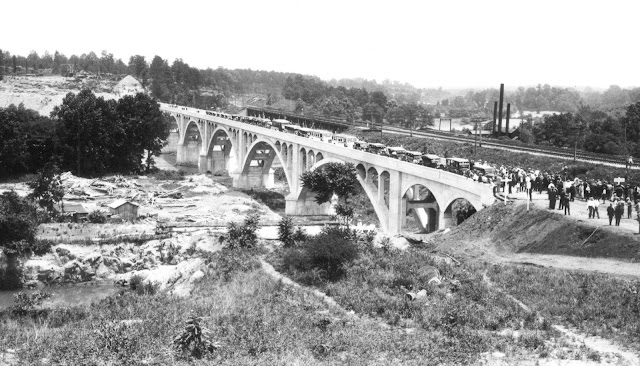Earlier this month, I brought over the feature I did on the Wil-Cox Bridge
on the old website to the blog. The seven arch concrete open-spandrel
bridge opened in 1924 and was a key piece of the Central Highway.
Recently, Ben Thurkill sent along a handful of photos from the bridge's
1924 opening. The five photos below are part of the NCDOT archives.
2018 Mojave Road Trip Part 2; The deadly desert highway (California State Route 127 and Nevada State Route 373)
After leaving Barstow via Old Highway 58 my next destination was in Death Valley. To access Death Valley from rural San Bernardino County required a trek on north on Interstate 15 to California State Route 127 which becomes Nevada State Route 373 at the state line. Along I-15 I encountered the road sign oddity that is Zzyzx Road about eight miles south of Baker. Zzyzx Road is a four mile road that used to go to the Zzyzx Mineral Springs and Health Spa. The spa was founded in the 1940s and the owner made up the name "Zzyzx" to claim it was the last word in the English Language. The spa has been shut down since the 1970s and is now part of a Desert Studies Center for California State University. The southern terminus of CA 127 in Baker is located at I-15 exit 246. CA 127 is a 91 mile north/south highway which runs to the Nevada State Line in Inyo County. CA 127 is called Death Valley Road from I-15 northward. South of CA 127 ...






Comments